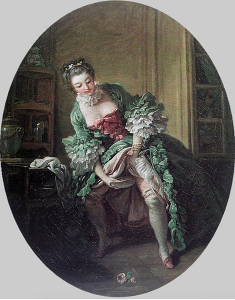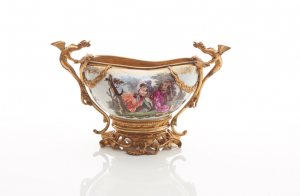Lant: The Forgotten Resource
Every January, the first-year fellows of the Winterthur Program and several students in MA and PhD programs from the University of Delaware take part in British Design History: a three-week course on design and material culture with one week at Winterthur and a two-week field study in Great Britain. Traveling to cities including London, Stoke-on-Trent, and Bath, the students have an opportunity to study American Material Culture within a greater global context. Students’ posts in this section are centered on their experiences in England or working with British objects in the Winterthur collection.
There are very few substances as useful and versatile as one each and every one of us makes everyday. Urine. While we were in England we saw a lot of amazing things, but I couldn’t help thinking about what we weren’t seeing. The incredible chemical agent that was crucial to tasks like tanning hides, curing tobacco, making gunpowder, dyeing, bleaching, making beer, and warding off witches, urine is rarely discussed in historic sites – and so we will honor it here.

Francois Boucher, 1760s, La Toilette intime (Une Femme qui pisse), or “The intimate Toilette (A woman who pees).” Painting shows a woman peeing in a bourdaloue. A bourdaloue is an 18th-century object, typically painted porcelain or other ceramic, used by women to relieve themselves when sitting down was not an option.
The word urine comes from Latin urina and Greek ouron. For the purposes of this blog post it may be better to think of the Old English word “lant.” Lant refers specifically to aged urine that was collected and put aside so that it could ferment. The ammonium content made it a valuable resource that was irreplaceable in certain chemical processes.
Given how useful lant was in such a variety of industries I was pestered by the questions of who was collecting and distributing the valuable resource. The quick answer is the “gong farmer.” Gong farmer was a term that entered use in Tudor England to describe someone who dug out and removed human excrement from privies and cesspits. “Gong” comes from the Old English gang, which means, “to go.” Though well compensated, the life of a gong farmer was devoid of any cache. The role was highly stigmatized and was only performed between 9pm – 5am. While this important role is under-acknowledged (in my humble opinion) it still doesn’t explain the distribution of urine specifically. From what I have sussed out, Gong farmers primarily dealt with the removal of solid waste and I still want to know how lant was dispersed amongst the many industries that depended on it.
Surprisingly, I haven’t found a solid answer. This could be because urine is so readily available that there was no overt market for its distribution. It has been argued that industries simply exploited the free resource. The gunpowder industry provides an interesting example of this strange system of resource allocation. There are three ingredients necessary for the creation of gunpowder: saltpeter, charcoal, and sulfur. Saltpeter is the only ingredient that is tricky to cultivate. Luckily for 17th-century England, it is a by-product of bird droppings and human urine. Saltpeter became a royal monopoly and King Charles I issued a proclamation that families had to collect the urine from their homes and livestock to be handed over daily to ‘Saltpeter men.’ In 1638 the powers of the ‘Saltpeter men’ were extended to allow them to dig up the urine soaked floors of all dove-houses, stables, cellars, etc. To facilitate the retrieval of saltpeter, it was illegal to cover the floors with anything other than ‘mellow earth.’ Later, Oliver Cromwell overturned the privileges of Saltpeter men to disturb homes. But it seems as though the resource continued to be given up freely to industries when it was needed.
On our trip we did talk a bit about the vessels one would historically use when excusing themselves. One was featured in the living experience of Dennis Sevres’ house as an example of everyday reality in Georgian bedrooms. We saw the royal privy closet at Hampton Court. We saw the pail closet at Sir John Soane’s Museum. But what excited me the most was an incredible Meissen Porcelain Bourdaloue we saw on the last day of our trip at the Holburne Museum. Curator Catrin Jones explained that it is an outstanding example of Meissen’s painting and gilding of this period, probably by renowned painter Johann George Heintze. The scene pictured below is taken from Jean-Antoine Watteau’s painting, La Surprise. Inside is hidden a message eluding to its function: ‘Aux Plaisirs des Dames’, or ‘For the lady’s pleasure.’
By Carrie Greif, WPAMC Class of 2019



Many 17c houses in Calderdale have lant troughs adjacent to the back door of the through passage. These were built into the wall at a suitable hight for ease of use by visitors and household members. The collected liquid was used by those involved in the fulling of wool fabric.
More info available if you are interested.